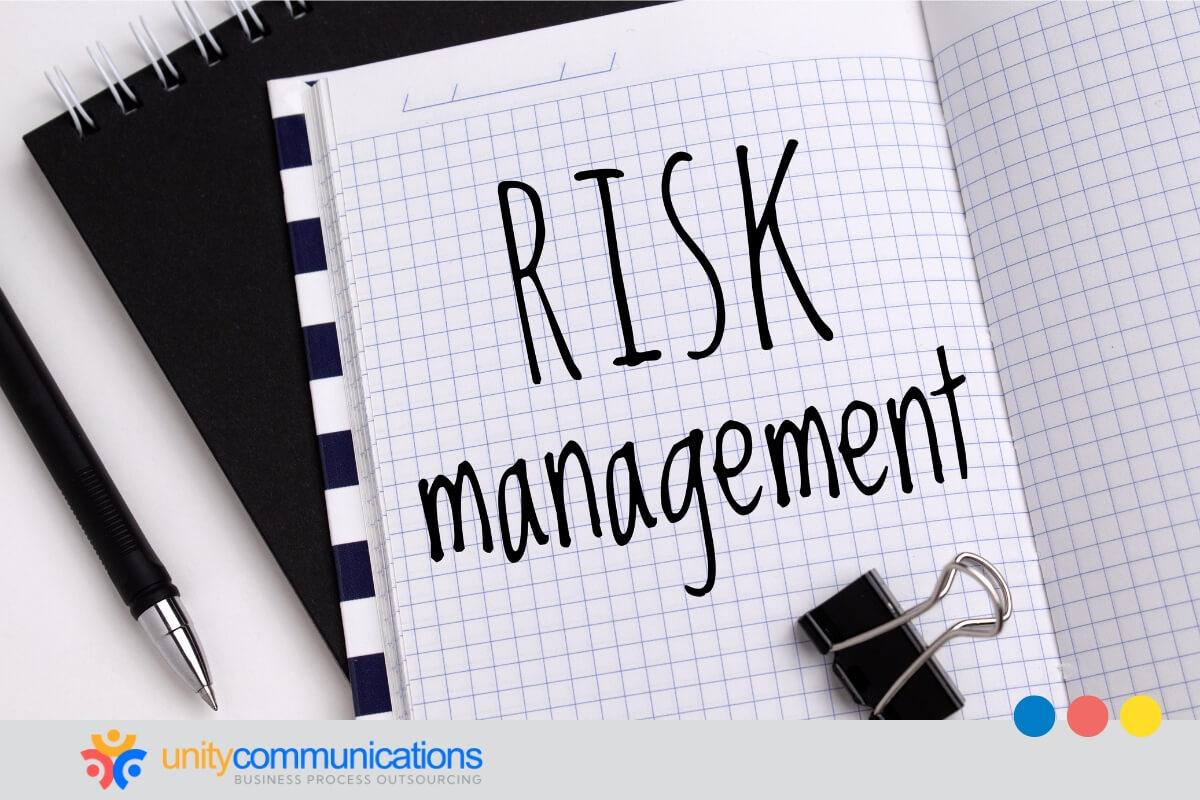Table of Contents
Is your business having problems managing external partners? Implementing contracts, tracking performance, and maintaining alignment can be overwhelming.
Business process outsourcing (BPO) helps companies centralize vendor management, cut costs, and improve efficiency. To maximize these benefits, you need the right strategies.
This guide covers the best practices for strengthening vendor relationships and boosting operational control, from contract oversight to risk reduction. Keep reading to learn how to manage multiple vendors with outsourcing.
Understanding BPO and its role in multi-vendor management

What is BPO, and how does it help to manage multiple vendors efficiently? Outsourcing allows your business to offload non-core tasks to service providers, improving vendor coordination, streamlining operations, and cutting costs. This centralized approach simplifies third-party management, primarily overseeing different suppliers without compromising efficiency.
Outsourcing companies establish structured workflows and standardize service-level agreements (SLAs) to maintain consistency across vendor partnerships. With single-point oversight, you can reduce miscommunication, eliminate redundant efforts, and align operations with business objectives.
Instead of handling individual suppliers separately, you can outsource to track vendor performance, enforce compliance, and manage workflows under a unified system. Third-party teams provide specialized expertise in many areas, including procurement, contract management, and dispute resolution.
The following further explains the benefits of BPO in managing multiple vendors:
- Tracking vendor performance. BPO providers use real–time analytics to assess compliance with performance metrics and vendor efficiency.
- Vendor selection and evaluation. External experts assess suppliers, improving reliability and helping organizations optimize vendor partnerships.
- Standardized vendor management. Outsourcing improves procurement, invoicing, and regulatory compliance to maintain consistency across partnerships.
- Enhanced risk management. Third-party BPO teams assist in monitoring vendor performance, mitigating risks, and ensuring policy adherence.
- Maximize vendor contracts. BPO professionals negotiate contracts and conditions for better terms, long–term value, and cost control.
The global BPO market could reach $491.53 billion in revenue by 2029, up from $414.81 billion in 2025. This growth highlights the increasing reliance on outsourcing for cost-saving opportunities, performance optimization, and operational scalability in managing vendors.
How to manage multiple vendors efficiently and stay in control

In BPO, vendor management involves delivering high–quality service, reducing risks, and optimizing costs. Strong supplier oversight improves vendor management and performance assessment processes to maintain reliability and accountability.
Here’s how to manage vendor relationships effectively:
1. Set clear expectations and communication channels
Effective vendor management starts with defining roles, responsibilities, and communication protocols. Your BPO partner can help establish clear expectations to avoid misunderstandings and enhance team collaboration.
The benefits of clear communication extend throughout the organization. According to the 2024 State of Business Communication, executives report improvements in customer satisfaction (51%), brand reputation (45%), successful business deals (43%), and cost reductions (33%). This indicates how crucial communication is to overall success.
To establish clear communication and set expectations, prioritize proactive engagement through:
- Set roles and responsibilities. Clarify each vendor’s tasks, accountability, and decision-making authority to prevent inefficiencies.
- Structured reporting protocols. Develop standardized reporting frameworks to track progress, resolve issues, and maintain compliance.
- Consistent feedback loops. Request regular updates and conduct performance reviews to help vendors adjust, address concerns quickly, and continuously align them with your expectations.
2. Define and enforce performance metrics across vendors
Implementing key performance indicators (KPIs) fosters alignment between vendors and business objectives. Established metrics provide consistency, accountability, and a clear understanding of expectations across all vendors. Such an approach keeps performance on track and improves collaboration.
By incorporating BPO in risk management, you can further enhance your ability to evaluate vendor performance, detect risks early, and support vendors so they can consistently meet the agreed-upon standards.
This is how to define and enforce KPIs to effectively manage multiple vendors:
- Standardize reporting formats to maintain uniform evaluations and improve comparability across vendors.
- Establish thresholds for acceptable and exceptional performance.
- Automate alerts for KPI deviations.
- Compare vendor performance against industry benchmarks for better competitiveness and accountability.
Align incentive structures with performance achievements for stronger vendor motivation. Performance metrics help your business track vendor efficiency, enhance transparency, and avoid risks due to non-compliance or poor performance.
3. Manage contracts and SLAs effectively
When supported by BPO, well-structured contracts and SLAs can hold vendors accountable and improve service quality. They provide explicit expectations, conditions, and duties that compel all parties to work toward the same goals. This eliminates risk and promotes effective vendor relationships.
SLAs confirm that vendors, suppliers, and other third-party partners satisfy stipulated criteria and describe the penalties for noncompliance. A thoughtfully designed SLA protects your business and keeps vendor performance under control.
Manage multiple vendors using contracts and SLAs with these tips:
- Detail specific deliverables and timelines in contracts.
- Establish penalties and rewards based on performance standards.
- Schedule regular contract and SLA audits to maintain alignment.
- Integrate contract management systems for better visibility and streamlined workflows.
- Promptly address discrepancies to maintain contractual integrity.
- Clarify dispute resolution processes to avoid conflicts and facilitate prompt resolution.
- Offer continuous training for internal teams and vendors on SLA expectations.
4. Use vendor management systems (VMS) to streamline operations
The global vendor management software market could grow from $10.32 billion in 2024 to$11.93 billion in 2025, indicating increasing demand and a growing reliance on technology-driven solutions. One popular tool is vendor management systems (VMS).
VMS simplifies tracking, reporting, and supplier collaboration. It centralizes data, automates tasks, and provides real-time insights to enhance decision-making.
These solutions help with efficient vendor oversight by evaluating vendor performance. Automated reporting and analytics provide accurate assessments, reduce errors, and deliver actionable insights.
Here’s how VMS and outsourcing help manage multiple vendors:
- Centralizing vendor data for better visibility
- Automating routine tasks to reduce manual efforts
- Using real-time reporting to track performance
- Enhancing collaboration with streamlined communication tools
- Monitoring compliance with standardized reporting frameworks
VMS tools offer a unified interface to oversee multiple vendors, providing visibility into performance, compliance, and financials across all engagements. By centralizing processes, you obtain a more complete picture of the operations.
5. Coordinate and maintain strong vendor relationships
Building trust and collaboration with vendors is necessary for lasting partnerships. BPO organizations help centralize communication, streamline operations, and increase transparency, assisting you in maintaining strong vendor relationships and managing expectations.
Here’s how BPO providers coordinate and maintain strong vendor relationships:
- Integrate collaborative platforms to enhance real-time vendor interaction.
- Align vendor objectives with organizational goals to create a win-win for all parties.
- Encourage regular feedback to improve performance and drive improvements.
- Practice transparent communication to nurture trust between vendors and your team.
- Leverage data-driven insights for better decision-making and performance tracking.
Clear communication and shared goals are crucial for effective vendor relationships. Nearshore and offshore outsourcing companies facilitate monitoring, compliance tracking, and quick issue resolution for alignment and smooth operations. By regularly engaging with vendors, your business can achieve trust and collaboration.
6. Monitor and review vendor performance regularly
Ongoing vendor evaluations help your business track compliance, improve service quality, and refine vendor strategies. Routine performance reviews highlight inefficiencies, prevent contractual breaches, optimize relationships, and enhance oversight, accountability, cost efficiency, and service reliability.
This is how to monitor and manage multiple vendors’ performance efficiently:
- Conduct periodic vendor audits to assess service quality and compliance.
- Utilize automated reporting tools for real-time performance tracking.
- Schedule performance review meetings to discuss progress and improvement areas.
- Compare vendor output against predefined benchmarks to spot inconsistencies and gaps.
- Use scorecards to track and compare KPIs and improve accountability.
- Provide vendors with structured feedback to guide corrective actions.
- Implement performance-based incentives to motivate vendor improvements and accountability.
Vendor assessments provide data-driven insights to guide your decisions. Performance analytics can identify underperformance early, reducing operational disruptions. Businesses that consistently review vendor performance can strengthen collaboration and achieve long-term value from vendor partnerships.
7. Identify risks and comply with regulations
A study shows that 58% of breaches result from third-party vulnerabilities, directly affecting contractors and government agencies. This data emphasizes the pressing need for diligent risk management and vendor compliance.
BPO fortifies risk management by refining compliance processes and oversight. Otherwise, you might face legal, financial, and operational issues.
Tracking compliance begins with risk evaluations. By regularly reviewing relevant factors, you can minimize threats that lead to financial loss, reputational damage, and strained vendor relationships.
Here’s how to manage multiple vendors when identifying risks and ensuring vendor compliance:
- Perform regular risk assessments to identify vulnerabilities and gaps in controls.
- Analyze financial stability and operational performance.
- Conduct security audits to review vendor safety measures and data protection practices.
- Develop compliance guidelines and monitor adherence.
- Include contract clauses that hold vendors accountable for breaches and penalize non-compliance.
- Implement ongoing monitoring tools to check vendor performance and resolve inconsistencies quickly.
- Build contingency plans for potential vendor non-compliance and avert disruptions.
8. Control costs and apply strategic negotiation tactics
Cost management is essential for maintaining profitability without compromising service quality. Strong negotiation skills and structured cost-control strategies help secure favorable terms while keeping vendors accountable for consistent value. Leveraging BPO streamlines vendor spending, enhancing financial oversight and cost efficiency.
Strategic outsourcing offers access to specialized expertise that sharpens cost negotiations and contract management. This approach reduces overhead, improves scalability, and bolsters vendor relationships.
This is how to manage multiple vendors when controlling costs and applying strategic negotiation tactics:
- Break down total costs to uncover hidden fees and pricing gaps.
- Renegotiate payment terms to improve cash flow while maintaining supply chain stability.
- Compare vendor rates against market trends to assess fairness and improve cost visibility.
- Bundle procurement needs to maximize volume discounts and supplier incentives.
- Reallocate spending to high-performing vendors for better long-term value and service reliability.
9. Plan and execute smooth vendor transitions
Vendor transitions should not cause disruptions. Clear communication, thorough planning, and coordination are key to achieving a fluid switch or onboarding of new vendors.
Nearshore and offshore BPO firms improve vendor transitions by streamlining processes, reducing risks, and maintaining business continuity while you set expectations early and develop action plans.
Here’s how to manage multiple vendors during transitions:
- Communicate transition plans clearly with involved parties.
- Set detailed timelines to track progress, prevent delays, and optimize efficiency.
- Involve relevant stakeholders early in the process to confirm alignment and address concerns.
- Conduct training sessions for new vendors to understand operations.
- Utilize technology to monitor status and facilitate smoother transitions.
- Conduct post-transition reviews to identify improvement areas and fine-tune processes.
Strategic vendor onboarding programs or switches promote consistent service quality and reduce downtime. Effective transition management can result in long-term partnerships and smooth business functions.
The bottom line

Managing multiple vendors efficiently with BPO is key to driving smooth operations, cutting costs, and improving productivity. With outsourcing, you can streamline workflows, improve coordination, and reduce risks.
From tracking vendor performance to optimizing contracts and using technology for smooth transitions, outsourcing helps you navigate the complexity of multi-vendor management.
Let’s connect and discuss how to manage multiple vendors effectively, boost vendor relationships, and improve efficiency with expert BPO solutions.




